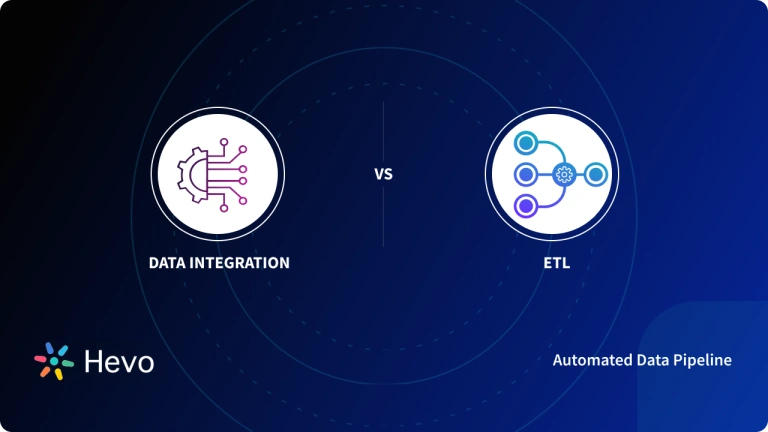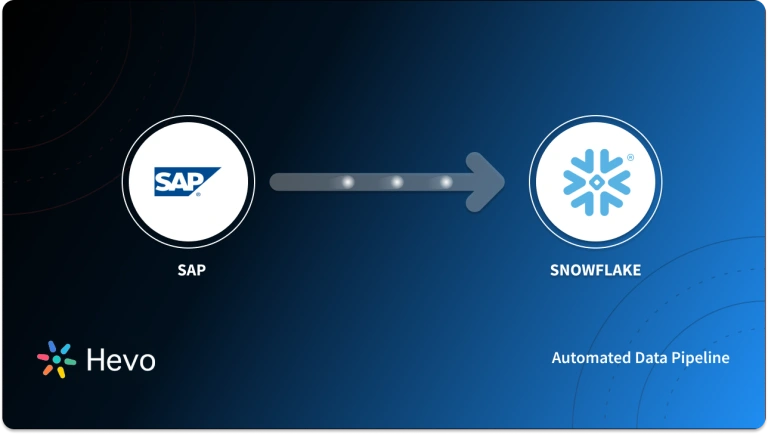SAP is a widely-used tool that helps large organizations streamline their daily operations, including financial management, inventory tracking, human resources, sales CRM, and more. Within the SAP ERP framework, data integration plays a crucial role in maintaining data consistency, enabling real-time insights that support better decision-making.
In this guide, we’ll explore what SAP is, why SAP ERP is essential, how businesses can benefit from SAP ERP data integration, and introduce four key tools for SAP data integration.
Table of Contents
What is SAP?
SAP (Systems, Applications, and Products) is a leading global software company specializing in data processing. It is renowned for its enterprise software solutions, which help organizations efficiently manage their business operations and customer relationships.
Some of the key solutions provided by SAP include:
- Enterprise Resource Planning (ERP),
- Business Intelligence (BI),
- Customer Relationship Management (CRM),
- Human Resources (HR),
- Cloud Services, and
- Mobile Applications.
Are you looking for an ETL tool to migrate your data? Migrating your data can become seamless with Hevo’s no-code intuitive platform. With Hevo, you can:
- Automate Data Extraction: Effortlessly pull data from various sources and destinations with 150+ pre-built connectors.
- Transform Data effortlessly: Use Hevo’s drag-and-drop feature to transform data with just a few clicks.
- Seamless Data Loading: Quickly load your transformed data into your desired destinations, such as BigQuery.
- Transparent Pricing: Hevo offers transparent pricing with no hidden fees, allowing you to budget effectively while scaling your data integration needs.
Try Hevo and join a growing community of 2000+ data professionals who rely on us for seamless and efficient migrations.
Get Started with Hevo for FreeWhat is SAP ERP and Why is it Needed?
Often, there are different approaches to managing and organizing data within an organization. One of them is a decentralized data management system. Here, the data is distributed across multiple locations, databases, or even individual departments within an organization.
In such a system, data storage can be fragmented, with each unit maintaining its data repositories.
For instance, consider a retail chain with multiple stores across different regions. Each store operates independently and manages its data locally. Sales data, customer data, employee records, and financial transactions are stored on separate servers at each store. While this decentralized approach provides autonomy to individual store managers, it can lead to several problems:
- Data Fragmentation: Each store maintains its datasets, leading to fragmented data. Customer data in one store’s database may not match another’s due to inconsistencies.
- Decision Delays: Retrieving data from disparate stores can be time-consuming and error-prone, affecting the efficiency of business operations.
- Data Security: Data security practices, if varied between stores, may lead to exposing sensitive customer data, potentially leading to security risks.
To address the limitations of decentralized systems, a shift to centralized systems or SAP ERP solutions is implemented. But what is ERP in SAP? SAP ERP serves as a centralized platform that integrates various functions and departments. It enables the storage and control of all data from a single central location or database.
Developed by SAP, SAP ERP (Enterprise Resource Planning) is a software solution to help you manage your business units and streamline core business processes. Using SAP ERP, you can seamlessly integrate various BU’s (Business Units) like finance, sales, inventory, and accounting into a unified platform.
SAP ERP data integration refers to the process of connecting data between SAP ERP Systems and other external systems or databases. You can share and synchronize data from diverse sources within or outside the SAP ERP environment. This allows you to enhance data accuracy and enables data-driven decision-making, improving overall efficiency.
Employing ERP SAP data integration can help you achieve several benefits:
- Enhanced Data Consistency: ERP SAP data integration ensures your data remains consistent and up-to-date across multiple systems and departments, reducing discrepancies.
- Improved Operational Efficiency: Integrating SAP ERP solutions helps you streamline processes and achieve real-time data access. This enhances operational efficiency, reducing manual work and errors.
- Advanced Analytics: SAP ERP integration solution supports advanced analytics and BI features, enabling deeper insights and reporting. This allows you to gain immediate insights from your data. As a result, this helps you identify trends, opportunities, and issues as they arise.
- Enhanced Customer Experience: Updated information availability and access to customer data, order status, and inventory levels enables you to provide better customer service. Customers can receive instant information on product availability, order status, and service request. As a result, this leads to high customer satisfaction.
- Data Security: SAP ERP offers robust security features, ensuring all types of data are protected with data privacy and regulations. It includes role-based access control, various authentication methods like single sign-on, and detailed audit logs and event logging.
SAP Data Integration Tools
SAP offers several data integration tools to enable seamless data movement, transformation, and synchronization with the SAP environment and with external systems. Here are four prominent SAP data integration tools:
- SAP Data Services
- SAP Landscape Transformation Replication Server
- SAP HANA Smart Data Integration
- SAP Replication Server
SAP Data Services
SAP Data Services, powered by SAP, is a powerful ETL (Extract, Transform, Load) tool that streamlines data integration, quality management, and transformation tasks. It helps you extract data from various sources, transform it as needed, and load it into SAP systems or other destinations. With its wide range of connectors, SAP Data Services ensures seamless data delivery in various formats to target systems. It also provides features for data profiling, cleaning, and enrichment, as shown in the functional overview image.
Data profiling is a key step within SAP Data Services, where data is analyzed to identify and resolve quality issues. For more complex scenarios, you can pair it with tools like SAP Information Steward to fully optimize data quality. A common use case for SAP Data Services is its use by BI and analytics teams to transfer data into SAP Business Warehouse (SAP BW) systems. It extracts, prepares, and loads data from transactional systems, particularly SAP systems, into SAP BW, supporting batch processing in the SAP BW environment.
SAP Landscape Transformation Replication Server
The SAP Landscape Transformation Replication Server is often referred to as the SAP LT Replication Server. It is designed to enable real-time data replication between two systems.
SAP LT Replication Server involves replicating data from either an SAP system or another database to a SAP HANA database.
SAP HANA (High-Performance Analytics Appliance) is an in-memory, columnar database management system. It is designed to handle large volumes of data in real-time, making it well-suited for business applications, analytics, and data warehousing.
Features of SAP LT Replication Server:
- Real-Time Replication: SAP LT Replication Server focuses on real-time replication, ensuring changes made in the sources are immediately reflected in the SAP HANA database. This is achieved through the use of database triggers on the source system. These triggers get activated with every data change and log entries to determine the changes.
- Deployment Options: The tool can be installed either on the source system or on a separate Advanced Business Application Programming (ABAP) system. This deployment flexibility allows you to choose depending on the organization’s requirements and architecture.
SAP HANA Smart Data Integration
SAP HANA smart data integration combines the features of SAP Data Services and SAP LT Replication Server. This makes it suitable for batch processing and real-time data integration.
Here are some of its key characteristics:
- Unidirectional Integration: SAP HANA smart data integration supports data integration into SAP HANA systems. It doesn’t export data from them.
- Data Replication and Data Virtualization: It offers two ways to integrate data into SAP HANA systems. In data replication, data is stored in the SAP HANA database. In data virtualization, data is fetched in real-time from the source as soon as information is needed by the application. This process is facilitated by SAP Hana Smart data integration.
SAP Replication Server
SAP Replication Server is a data replication and synchronization tool. It enables real-time replication between databases, ensuring data changes are continuously updated in the target environment.
- High Availability: In scenarios where an active system fails, the SAP Replication Server allows you to seamlessly perform a transition to an inactive system, minimizing downtime.
- Failover Support: SAP Replication Server supports failover and disaster recovery strategies. It achieves this by ensuring synchronized copies of data are readily available when needed.
Conclusion
SAP can be used by a wide variety of businesses, and SAP ERP solutions can help you streamline your business tasks and improve efficiency.
If you’re in the market for a real-time data replication tool, try Hevo. Hevo Data can also help you set up a near-real-time data transfer pipeline between any two platforms. With an intuitive interface and data transformation capabilities, Hevo is an effective solution for your data integration needs.
If you don’t want SaaS tools with unclear pricing that burn a hole in your pocket, opt for a tool that offers a simple, transparent pricing model. Hevo has 3 usage-based pricing plans starting with a free tier, where you can ingest up to 1 million records.
Schedule a demo to see if Hevo would be a good fit for you, today!
FAQs
1. What is SAP data integration?
SAP data integration refers to the process of connecting SAP systems (like SAP S/4HANA or SAP BW) with other data sources, applications, or platforms. This allows seamless data exchange, synchronization, and transformation, enabling better decision-making and streamlined business processes across systems.
2. What is ERP data integration?
ERP data integration involves connecting an Enterprise Resource Planning (ERP) system with other business applications and data sources. This integration ensures seamless data flow between departments, enabling real-time access to critical business information for improved decision-making and operational efficiency.
3. What database does SAP ERP use?
SAP ERP typically uses SAP’s proprietary database, SAP HANA, for real-time data processing and analytics. However, it can also be configured to work with other relational databases like Microsoft SQL Server, Oracle, and IBM Db2, depending on the deployment environment.
4. What is SAP Smart Data Integration?
SAP Smart Data Integration (SDI) is a data integration tool that allows seamless connection, transformation, and real-time movement of data between SAP and non-SAP systems. It provides capabilities for data replication, extraction, and loading (ETL), ensuring consistent and timely data for analytics and business processes.



